Acer orporated DME330NFCCE Smart HandHeld User Manual Acer E330 safety leaflet EN 2012
Acer Incorporated Smart HandHeld Acer E330 safety leaflet EN 2012
Contents
- 1. Manual Safety
- 2. Manual
- 3. Safety Manual
- 4. User Manual
- 5. Users Manual
- 6. Safety Attachment
Safety Attachment
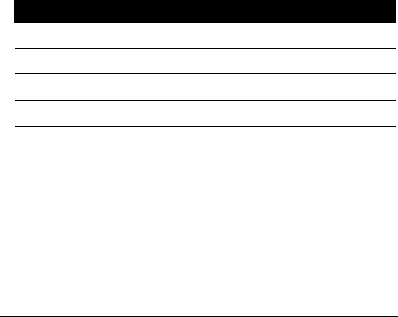
1
Specifications
Performance
• Qualcomm MSM 7227A, 1 GHz
• System memory:
• 512 MB of RAM
• 1 GB of ROM
• Android operating system
Display
• 3.7" WVGA TFT, capacitive touch panel
• 800 x 480 resolution
Multimedia
Formats supported:
USB connector
• Micro USB connector
•USB client
•DC power-in (5 V, 1 A)
Connectivity
•Bluetooth 3.0
• IEEE Wi-Fi 802.11b/g/n WLAN
• GSM 900 / 1800 / 1900
Type Formats
Audio playback MP3, AMR, WMA
Ringtone MP3, MIDI, iMelody, WAVE, WMA
Video recording 3GP, MPEG-4, H.263, H.264
Video playback 3GP, MPEG-4, H.263, H.264, WMV
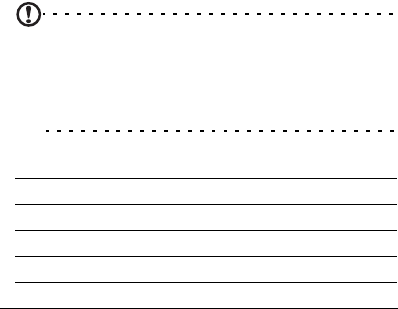
2
• UMTS 900 / 2100
• HSDPA / GPRS / EDGE
•GPS
•aGPS
•NFC
Camera
• 5-megapixel
•LED flash
Expansion
• microSD memory card slot (up to 32 GB)
Battery
• Rechargeable high density 1300 mAh Lithium-ion
battery (replaceable)
Note: Length of battery operation will depend on
power consumption which is based on system
resource use. For example, constantly using the
backlight or using power-demanding applications
will shorten battery life between charges.
Dimensions
Height 117 mm
Width 58.5 mm
Thickness 11.5 mm
Weight 125 g (with battery)

3
Safety
Battery information
This product uses a Lithium-ion battery. Do not use it
in a humid, wet and/or corrosive environment. Do not
put, store or leave your product in or near a heat
source, in a high temperature location, in strong direct
sunlight, in a microwave oven or in a pressurized
container, and do not expose it to temperatures over
60 °C (140 °F). Failure to follow these guidelines may
cause the battery to leak acid, become hot, explode
or ignite and cause injury and/or damage. Do not
pierce, open or disassemble the battery. If the battery
leaks and you come into contact with the leaked
fluids, rinse thoroughly with water and seek medical
attention immediately. For safety reasons, and to
prolong the lifetime of the battery, charging will not
occur at low (below 0 °C/32 °F) or high (over 40 °C/
104 °F) temperatures.
The full performance of a new battery is achieved only
after two or three complete charge and discharge
cycles. The battery can be charged and discharged
hundreds of times, but it will eventually wear out.
When the talk and standby times are noticeably
shorter than normal, buy a new battery. Use only
manufacturer approved batteries, and recharge your
battery only with manufacturer approved chargers
designated for this device.

4
Unplug the charger from the electrical plug and the
device when not in use. Do not leave a fully charged
battery connected to the AC charger, since
overcharging may shorten its lifetime. If left unused, a
fully charged battery will lose its charge over time. If
the battery is completely discharged, it may take a
few minutes before the charging indicator appears on
the display or before any calls can be made.
Use the battery only for its intended purpose. Never
use any charger or battery that is damaged.
Do not short-circuit the battery. Accidental short-
circuiting can occur when a metallic object such as a
coin, clip, or pen causes direct connection of the
positive (+) and negative (-) terminals of the battery.
These look like metal strips on the battery. This might
happen, for example, when you carry a spare battery
in your pocket or purse. Short-circuiting the terminals
may damage the battery or the connecting object.
Leaving the battery in hot or cold places, such as in a
closed car in summer or winter conditions, will reduce
the capacity and lifetime of the battery. Always try to
keep the battery between 15 °C and 25 °C (59 °F and
77 °F). A device with a hot or cold battery may not
work temporarily, even when the battery is fully
charged. Battery performance is particularly limited in
temperatures well below freezing.
Do not dispose of batteries in a fire as they may
explode. Batteries may also explode if damaged.
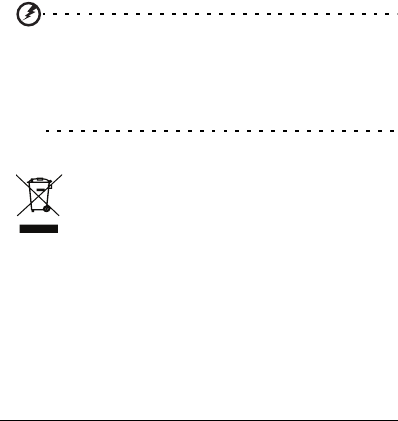
5
Dispose of batteries according to local regulations.
Please recycle when possible. Do not dispose as
household waste.
Replacing the battery
Your smartphone uses a Lithium-ion battery. Replace
the battery with the same type as that which came
bundled with your product. Use of another battery
may present a risk of fire or explosion.
Warning! Batteries may explode if not handled
properly. Do not disassemble or dispose of
them in fire. Keep them away from children.
Follow local regulations when disposing of
used batteries.
Disposal and recycling information
Do not throw this electronic device into the
trash when discarding.
To minimize pollution and ensure utmost
protection of the global environment, please
recycle. For more information on the Waste from
Electrical and Electronics Equipment (WEEE)
regulations, visit www.acer-group.com/public/
Sustainability/sustainability01.htm
EEE yönetmeligine uygundur.
It is compliant with EEE regulation.
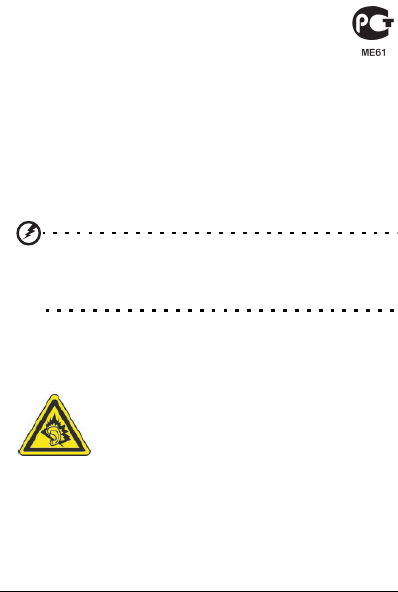
6
Regulatory information
Compliant with Russian regulatory
certification
RoHS compliance
This product is in compliance with Directive 2002/95/
EC of the European Parliament and of the Council of
27 January 2003, on the restriction of the use of
certain hazardous substances in electrical and
electronic equipment (RoHS) and its amendments.
Prevention of hearing loss
Caution: Permanent hearing loss may occur if
earphones or headphones are used at high
volume for prolonged periods of time.
This device have been tested to comply with the
Sound Pressure Level requirement laid down in the
applicable EN 50332-1 and/or EN 50332-2 standards.
A pleine puissance, l’écoute prolongée
du baladeur peut endommager l’oreille
de l’utilisateur.
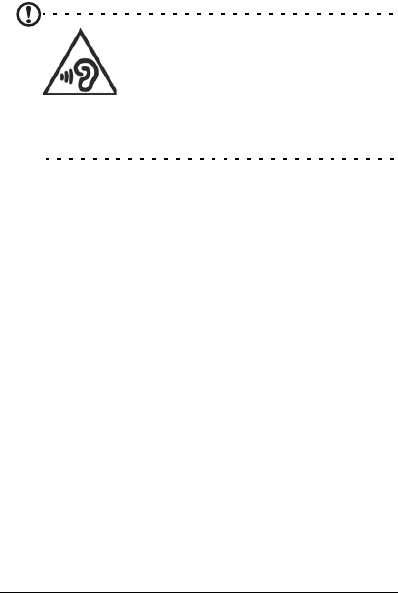
7
Note: For France, mobile headphones or
earphones for this device have been tested
to comply with the Sound Pressure
requirement laid down in the applicable NF
EN 50332-1:2000 and/or NF EN 50332-
2:2003 standards as required by French Article L. 5232-
1.
Wireless operation channels for different domains
France: Products with a 2.4 GHz WLAN device
For products with 2.4 GHz Wireless LAN device
operation, certain restrictions apply:
• The maximum authorized power indoors is 100
mW for 2400-2483.5 MHz.
• The maximum authorized power outdoors is 100
mW for 2400-2454 MHz.
• The maximum authorized power outdoors is 10
mW for 2454-2483.5 MHz.
For the latest requirements, see
www.art-telecom.fr.
L'utilisation de cet equipement (2.4GHz WLAN) est
soumise à certaines restrictions:
N. America 2.412-2.462 GHz Ch01 through Ch11
Japan 2.412-2.484 GHz Ch01 through Ch14
Europe ETSI 2.412-2.472 GHz Ch01 through Ch13

8
• La puissance maximale autorisée en intérieur est
de 100 mW pour 2400 - 2483.5 MHz.
• La puissance maximale autorisée est de 100 mW
en extérieur pour 2400 - 2454MHz.
• La puissance maximale autorisée est de 10 mW en
extérieur pour 2454 - 2483.5MHz.
Pour les dernières restrictions, voir
www.art-telecom.fr.
List of National Codes
This equipment may be operated in the following
countries:
Certificate Information (SAR)
This device meets the EU requirements (1999/519/
EC) on the limitation of exposure of the general public
to electromagnetic fields by way of health protection.
Country
Austria
Belgium
Cyprus
Czech Republic
Denmark
Estonia
Finland
France
Germany
Greece
Hungary
Ireland
Italy
Latvia
Lithuania
Luxembourg
ISO 3166
2 letter code
AT
BE
CY
CZ
DK
EE
FI
FR
DE
GR
HU
IE
IT
LV
LT
LU
Country
Malta
Netherlands
Poland
Portugal
Slovakia
Slovenia
Spain
Sweden
United Kingdom
Iceland
Liechtenstein
Norway
Switzerland
Bulgaria
Romania
Tur ke y
ISO 3166
2 letter code
MT
NT
PL
PT
SK
SL
ES
SE
GB
IS
LI
NO
CH
BG
RO
TR

9
The limits are part of extensive recommendations for
the protection of the general public. These
recommendations have been developed and checked
by independent scientific organizations through
regular and thorough evaluations of scientific studies.
To guarantee the safety of all persons, regardless of
age and health, the limits include a significant safety
buffer.
Before radio devices can be put in circulation, their
agreement with European laws or limits must be
confirmed; only then may the CE symbol be applied.
The unit of measurement for the European Council's
recommended limit for mobile telephones is the
"Specific Absorption Rate" (SAR). This SAR limit is
2.0 W/kg, averaged over 10 g of body tissue. It meets
the requirements of the International Commission on
Non-Ionizing Radiation Protection (ICNIRP) and was
included in the European Standard EN 50360 for
mobile radio devices. The SAR regulation for mobile
telephones is in line with European Standard EN
62209-1. The maximum SAR value is calculated at
the highest output level in all frequency bands of the
mobile telephone.
For body worn operation, this phone (EU model) has
been tested and meets the ICNIRP exposure
guidelines, and was included in the European
Standard EN 62311 and EN 62209-2 for use with
accessories that contain no metal and that position
the handset a minimum of 1.5 cm from the body. Use
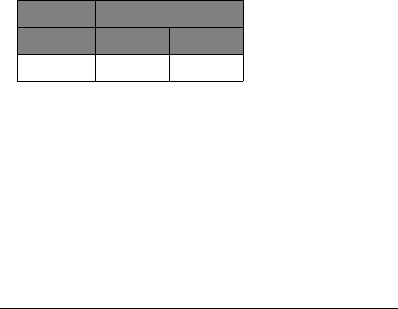
10
of other accessories may not ensure compliance with
ICNIRP exposure guidelines. If you do not use a
body-worn accessory and are not holding the phone
at the ear, position the handset a minimum of 1.5 cm
from your body when the phone is switched on.
During use, the actual SAR level is usually much lower
than the maximum value, because the mobile
telephone works in different output levels. It only
transmits with as much output as is required to reach
the network. In general the following applies: The
closer you are to a base station, the lower the
transmission output of your mobile telephone. The
tested SAR of this device is as follows:
FCC regulations
This mobile phone complies with part 15 of the FCC
Rules. Operation is subject to the following two
conditions:
(1) This device may not cause harmful interference,
and
(2) this device must accept any interference received,
including interference that may cause undesired
operation.
NCC CE
Head (W/kg) Head (W/kg) Body (W/kg)
1.68 1.68 0.863

11
This mobile phone has been tested and found to
comply with the limits for a Class B digital device,
pursuant to Part 15 of the FCC Rules.
These limits are designed to provide reasonable
protection against harmful interference in a residential
installation. This equipment generates, uses and can
radiate radio frequency energy and, if not installed
and used in accordance with the instructions, may
cause harmful interference to radio communications.
However, there is no guarantee that interference will
not occur in a particular installation. If this equipment
does cause harmful interference to radio or television
reception, which can be determined by turning the
equipment off and on, the user is encouraged to try to
correct the interference by one or more of the
following measures:
• Reorient or relocate the receiving antenna.
• Increase the separation between the equipment
and receiver.
• Connect the equipment into an outlet on a circuit
different from that to which the receiver is
connected.
• Consult the dealer or an experienced radio/TV
technician for help.
Changes or modifications not expressly approved by
the party responsible for compliance could void the
user's authority to operate the equipment.

12
RF exposure warning
The equipment complies with FCC RF exposure limits
set forth for an uncontrolled environment.
The antenna(s) used for this transmitter must not be
co-located or operating in conjunction with any other
antenna or transmitter.
RF exposure information (SAR)
This mobile phone meets the government's
requirements for exposure to radio waves.
This phone is designed and manufactured not to
exceed the emission limits for exposure to radio
frequency (RF) energy set by the Federal
Communications Commission of the U.S.
Government.
The exposure standard for wireless mobile phones
employs a unit of measurement known as the
Specific Absorption Rate, or SAR. The
SAR limit set by the FCC is 1.6 W/kg.
Tests for SAR are conducted using standard
operating positions accepted by the FCC with
the phone transmitting at its highest certified power
level in all tested frequency bands.
Although the SAR is determined at the highest
certified power level, the actual SAR level of the
phone while operating can be well below the
maximum value. This is because the phone is
designed to operate at multiple power levels so as to
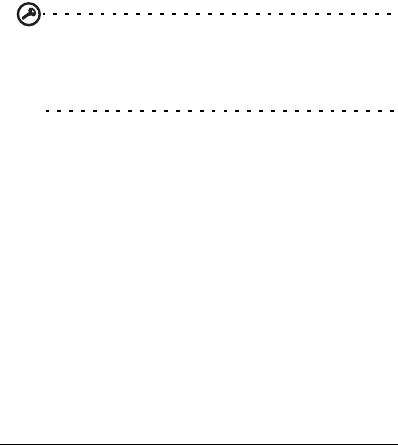
13
use only the power required to reach the network. In
general, the closer you are to a wireless base station
antenna, the lower the power output.
The highest SAR value as reported to the FCC when
tested for use at the ear is 0.816 W/kg and when worn
on the body, as described in this user guide, is 0.959
W/kg for GSM 1900 MHz band.
Important: Body-worn measurements differ
amount phone models, depending upon
available enhancements and FCC
requirements.
While there may be differences between the SAR
levels of various phones and at various positions, they
all meet the government requirements.
The FCC has granted an Equipment Authorization for
this model of phone with all reported SAR levels
evaluated as in compliance with the FCC RF
exposure guidelines. SAR information on this model
of phone is on file with the FCC and can be found
under the Display Grant section of www.fcc.gov/oet/
ea/fccid after searching on FCC ID:
HLZDME330NFCCE.
For body worn operation, this phone has been tested
and meets the FCC RF exposure guidelines for use
with accessories that contain no metal and that
position the handset a minimum of 1 cm from the

14
body. Use of other accessories may not ensure
compliance with FCC RF exposure guidelines. If you
do not use a body-worn accessory and are not
holding the phone at the ear, position the handset a
minimum of 1 cm from your body when the phone is
switched on.
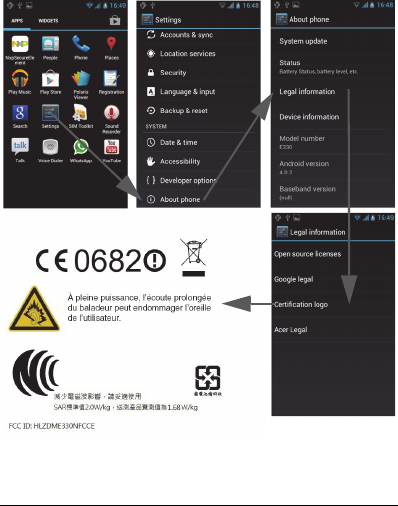
15
Certification logos
To view the certification logos on your device: tap
Settings > About phone > Legal information >
Certification logo.
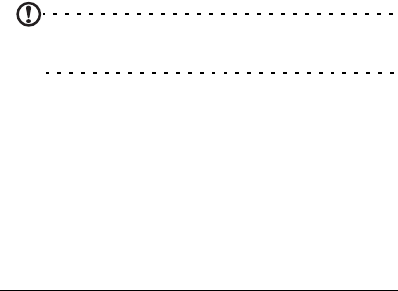
16
NCC warning
警語
經型式認證合格之低功率射頻電機,非經許可,公司、
商號或使用者均不得擅自變更頻率、加大功率或變更
原設計之特性及功能。
低功率射頻電機之使用不得影響飛航安全及干擾合法
通信;經發現有干擾現象時,應立即停用,並改善至
無干擾時方得繼續使用。
前項合法通信,指依電信法規定作業之無線電通信。
低功率射頻電機須忍受合法通信或工業、科學及醫療
用電波輻射性電機設備之干擾,減少電磁波影響,請
妥善使用。
Note: SAR 標準值 2.0 W/kg; 送測產品實測值為 :
1.68 W/kg
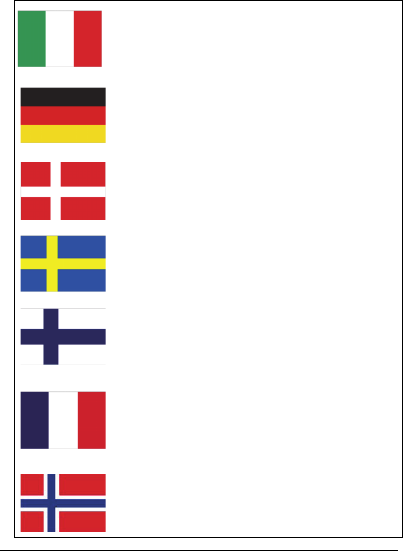
17
Lithium-ion battery warning
ATTENZIONE! Rischio di esplosione della batteria se
sostituita in modo errato. Sostituire la batteria con un
una di tipo uguale o equivalente consigliata dalla
fabbrica. Non disperdere le batterie nell’ambiente.
VORSICHT! Explosionsgefahr bei unsachgemäßen
Austausch der Batterie. Ersatz nur durch denselben
oder einem vom Hersteller empfohlenem ähnlichen
Typ. Entsorgung gebrauchter Batterien nach
Angaben des Herstellers.
ADVARSELI! Lithiumbatteri - Eksplosionsfare ved
fejlagtig håndtering. Udskiftning må kun ske med
batteri af samme fabrikat og type. Levér det brugte
batteri tilbage til leverandøren.
VARNING! Explosionsfara vid felaktigt batteribyte.
Använd samma batterityp eller en ekvivalent typ som
rekommenderas av apparattillverkaren. Kassera
använt batteri enligt fabrikantens instruktion.
VAROITUS! Paristo voi räjähtää, jos se on
virheellisesti asennettu. Vaihda paristo ainoastaan
laitevalmistajan sousittelemaan tyyppiin. Hävitä
käytetty paristo valmistagan ohjeiden mukaisesti.
ATTENTION! Il y a danger d’explosion s’il y a
remplacement incorrect de la batterie. Remplacer
uniquement avec une batterie du mêre type ou d’ un
type équivalent recommandé par le constructeur.
Mettre au rebut les batteries usagées conformément
aux instructions du fabricant.
ADVARSEL! Eksplosjonsfare ved feilaktig skifte av
batteri. Benytt samme batteritype eller en tilsvarende
type anbefalt av apparatfabrikanten. Brukte batterier
kasseres i henhold til fabrikantens instruksjoner.

18
Acer Incorporated
Date: May 7, 2012
Declaration of Conformity
We, Acer Incorporated,
of 8F., No. 88, Sec. 1, Xintai 5th Rd., Xizhi Dist, New Taipei City,
22181, Taiwan
Declare under sole responsibility that the product:
Model: E330
Description: Smart Handheld
To which this declaration relates, is in conformity with
the following standards and/or other normative
documents:
• EN 301 511 V9.0.2
• EN 301 908-1 V5.2.1; EN 301 908-2 V5.2.1
• EN 300 328 V1.7.1
• EN 300 440-1 V1.6.1; EN 300 440-2 V1.4.1
• EN 301 489-1 V1.9.2; EN 301 489-3 V1.4.1; EN
301 489-7 V1.3.1
• EN 301 489-17 V2.1.1; EN 301 489-24 V1.5.1
• EN 302 291-1 V1.1.1; EN 302 291-2 V1.1.1
• EN 55022:2010/AC:2011 Class B; EN 55024:2010
• EN 55013:2001/A1:2003/A2:2006; EN
55020:2007
• EN 60950-1: EN 60950-
1:2006+A11:2009+A1:2010+A12:2011
• EN 50332-1:2000; EN 50332-2:2003
0682
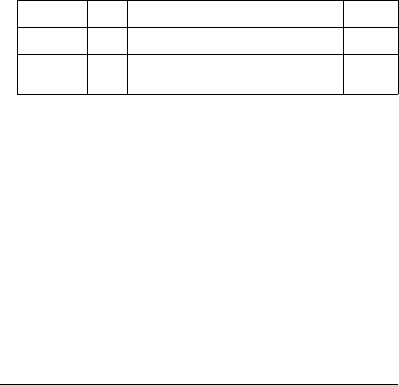
19
• EN 50360:2001/AC:2006; EN 50364:2010; EN
62311:2008; EN 62209-1:2006;EN 62209-2:2010;
EN 62479:2010
• RoHS Directive 2002/95/EC on the Restriction of
Use of certain Hazardous Substances in Electrical
and Electronic Equipment.
• The maximum concentration values of the
restricted substances by weight in homogenous
material are:
We hereby declare that the above named product is in
conformance to all the essential requirements of the
R&TTE Directive (99/5/EC) issued by the Commission
of the European Community.
The conformity assessment procedure referred to in
Article 10 and detailed in Annex [IV] of directive 1999/5/
EC has been followed related to Articles:
• R&TTE Article 3.1 (a) Health and Safety
• R&TTE Article 3.1 (b) EMC
• R&TTE Article 3.2 Spectrum Usage
with the involvement of the following Notified Body:
Lead 0.1% Polybrominated Biphenyls (PBB’s) 0.1%
Mercury 0.1% Polybrominated Diphenyl Ethers (PBDE’s) 0.1%
Hexavalent
Chromium
0.1% Cadmium 0.01%

20
CETECOM, Untertuerkheimer Str. 6 – 10 66117
Saarbruecken
Identification mark: 0682 (Notified Body) CE
The technical documentation relevant to the above
equipment will be held at:
Acer Incorporated
8F., No. 88, Sec. 1, Xintai 5th Rd., Xizhi Dist, New Taipei
City, 22181, Taiwan
Authorized person:
Name: Harriot SL Lee
For the address/telephone number of Acer service center,
please refer to the warranty card.